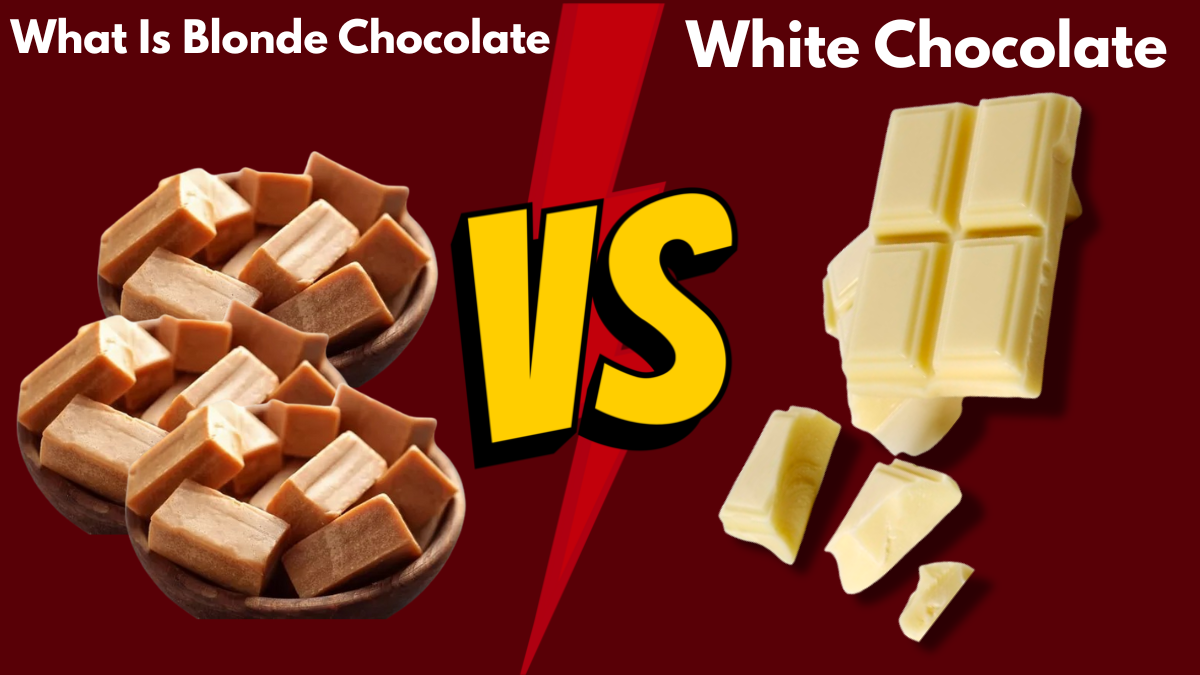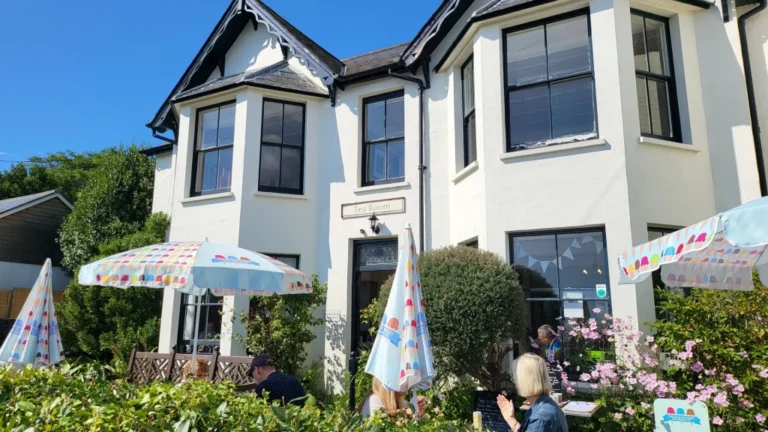What Is Blonde Chocolate vs White Chocolate – Differences, Taste & Uses
What Is Blonde Chocolate vs White Chocolate is a question many chocolate lovers are asking as this golden variety gains popularity across the UK and beyond. While most people are familiar with milk, dark, and white chocolate, blonde chocolate has entered the spotlight with its unique caramelised flavour and golden appearance.
The rise of blonde chocolate has sparked curiosity among bakers, chefs, and food enthusiasts. Unlike traditional varieties, it delivers a deeper richness with notes of toffee and shortbread. In this article, we’ll explore what blonde chocolate is, what it is made of, how it tastes, and how it compares with the familiar sweetness of white chocolate.
What Is Blonde Chocolate?
Blonde chocolate is essentially caramelised white chocolate. Chocolatiers discovered that gently heating white chocolate over time transforms its pale ivory colour into a golden shade while enhancing its flavour. The result is a luxurious chocolate with notes of toffee, shortbread, and butterscotch. It stands apart from the simple sweetness of white chocolate and offers more complexity on the palate.
When discussing what is blonde chocolate vs white chocolate, it helps to see blonde chocolate as the grown-up sibling of its paler counterpart. It keeps the creamy texture that chocolate lovers enjoy but introduces deeper tones that make it more versatile. This versatility is one reason why chefs are increasingly experimenting with blonde chocolate in desserts, pastries, and drinks.
What Is Blonde Chocolate Made Of?
At its core, blonde chocolate begins with the same ingredients as white chocolate: cocoa butter, sugar, and milk solids. White chocolate does not contain cocoa solids, which is why it lacks the dark colour and bitter taste of milk or dark chocolate. Instead, it has a light sweetness and creamy base that makes it ideal for transformation.
Blonde chocolate is created by slowly roasting or caramelising white chocolate at a controlled temperature. This process triggers the Maillard reaction, a chemical change that occurs when proteins and sugars are heated. It is the same reaction responsible for the golden crust of bread or the rich flavour of roasted coffee. This transformation is what makes blonde chocolate unique in the debate of what is blonde chocolate vs white chocolate.
Blonde Chocolate vs White Chocolate – Key Differences

One of the clearest differences between blonde chocolate and white chocolate is appearance. White chocolate is usually ivory or pale yellow, whereas blonde chocolate has a distinctive golden colour that reflects its caramelised nature. The contrast is immediately noticeable, making blonde chocolate appealing for both taste and presentation in desserts.
Flavour is another major distinction. White chocolate has a creamy, sweet taste dominated by vanilla and milk. Blonde chocolate, on the other hand, develops richer notes of caramel, toffee, and biscuit. This makes it less one-dimensional and more satisfying to a wider audience. For anyone considering what is blonde chocolate vs white chocolate, the flavour difference is often the deciding factor in which one they prefer.
Flavours and Tasting Notes of Blonde Chocolate
The taste of blonde chocolate is often described as indulgent yet balanced. It has a buttery sweetness similar to shortbread, paired with caramelised undertones that linger on the palate. This layered flavour profile makes it ideal for enjoying on its own or paired with complementary ingredients. Compared to white chocolate, it offers greater depth and complexity.
Pairing blonde chocolate with other foods enhances its appeal. It goes well with fresh berries, nuts, or even a cup of coffee. Bakers also use it to add a caramel richness to mousses, biscuits, and ganache. When exploring what is blonde chocolate vs white chocolate, it becomes clear that blonde chocolate opens up a world of new taste experiences.
Uses of Blonde Chocolate in Baking and Cooking
Blonde chocolate has become increasingly popular in baking. Its golden colour adds visual charm to desserts, while its caramel flavour enriches recipes such as cakes, brownies, and cheesecakes. It can be used for drizzling, moulding, or even as a centrepiece ingredient in pastries and confectionery. The unique flavour makes it especially appealing in gourmet desserts.
Beyond baking, blonde chocolate can be incorporated into drinks or used as a coating for fruits and nuts. Some chefs even use it in savoury dishes to balance saltier flavours. When comparing what is blonde chocolate vs white chocolate in practical terms, blonde chocolate’s versatility in recipes makes it a creative ingredient for modern cooking.
Health Considerations and Nutritional Information
Blonde chocolate and white chocolate share many nutritional similarities. Both are high in sugar and fat due to their cocoa butter and milk content, making them more of an indulgence than a health food. However, because blonde chocolate has a more complex flavour, some people find that smaller portions feel more satisfying.
In terms of what is blonde chocolate vs white chocolate from a nutritional perspective, the main difference lies in the caramelisation process rather than calorie count. Both should be enjoyed in moderation, but blonde chocolate may offer a slightly more rewarding experience due to its richer taste and aroma.
Conclusion
Blonde chocolate is an exciting addition to the chocolate family, offering something new for those who already enjoy traditional varieties. By caramelising white chocolate, chocolatiers have created a product that is golden in colour, rich in flavour, and versatile in its uses. It is this transformation that defines what is blonde chocolate vs white chocolate.
For chocolate lovers, the choice between the two comes down to taste. White chocolate provides a sweet, creamy experience, while blonde chocolate adds depth with toffee-like notes. Whether eaten alone, baked into desserts, or paired with coffee, blonde chocolate is a treat worth exploring.
FAQs
Is blonde chocolate the same as white chocolate?
No, blonde chocolate is caramelised white chocolate, which gives it a golden colour and richer taste.
What does blonde chocolate taste like?
It has notes of toffee, shortbread, and caramel, making it more complex than the simple sweetness of white chocolate.
Can blonde chocolate replace white chocolate in recipes?
Yes, it can substitute white chocolate in recipes, though it will create a richer, more toasted flavour profile.
How is blonde chocolate made?
It is made by slowly heating white chocolate to caramelise the sugars and milk solids.
Where can I buy blonde chocolate in the UK?
It can be found in speciality chocolate shops, online stores, and increasingly in supermarkets.
Is blonde chocolate healthier than white chocolate?
Nutritionally, they are similar, but blonde chocolate’s deeper flavour may make smaller portions more satisfying.
You May Also Read: Italian Dining Experiences for Families and Groups







